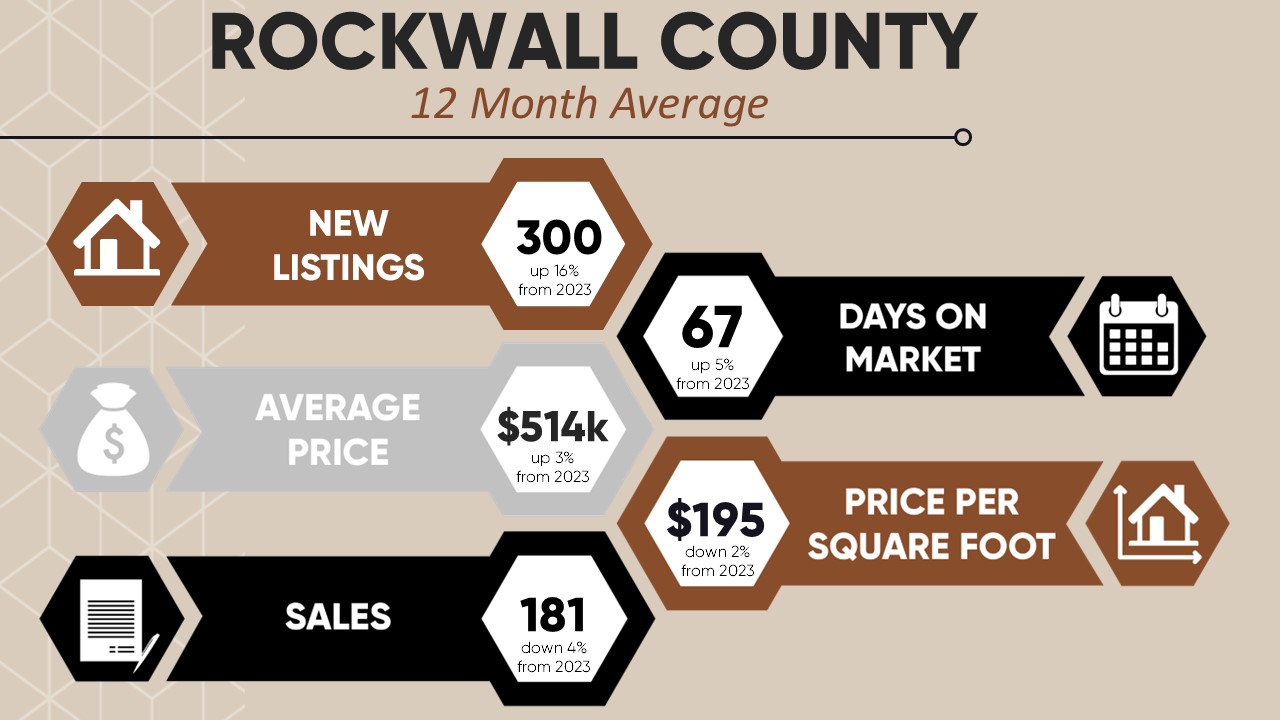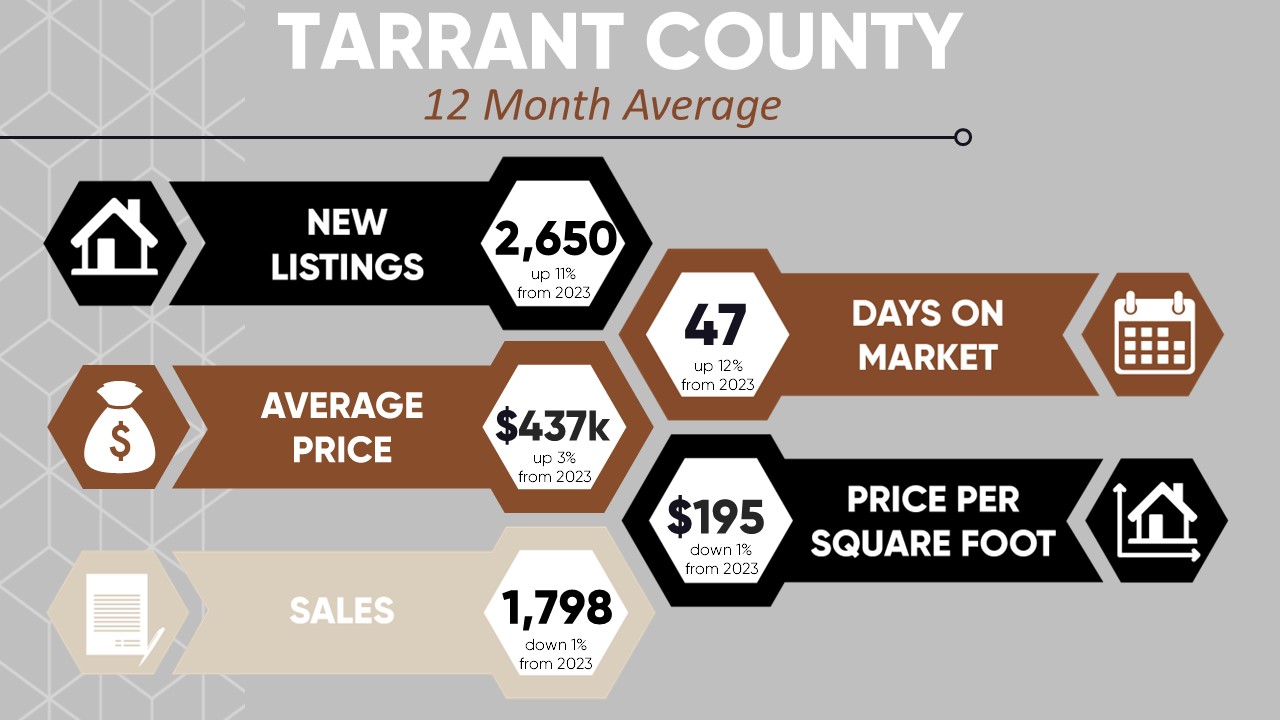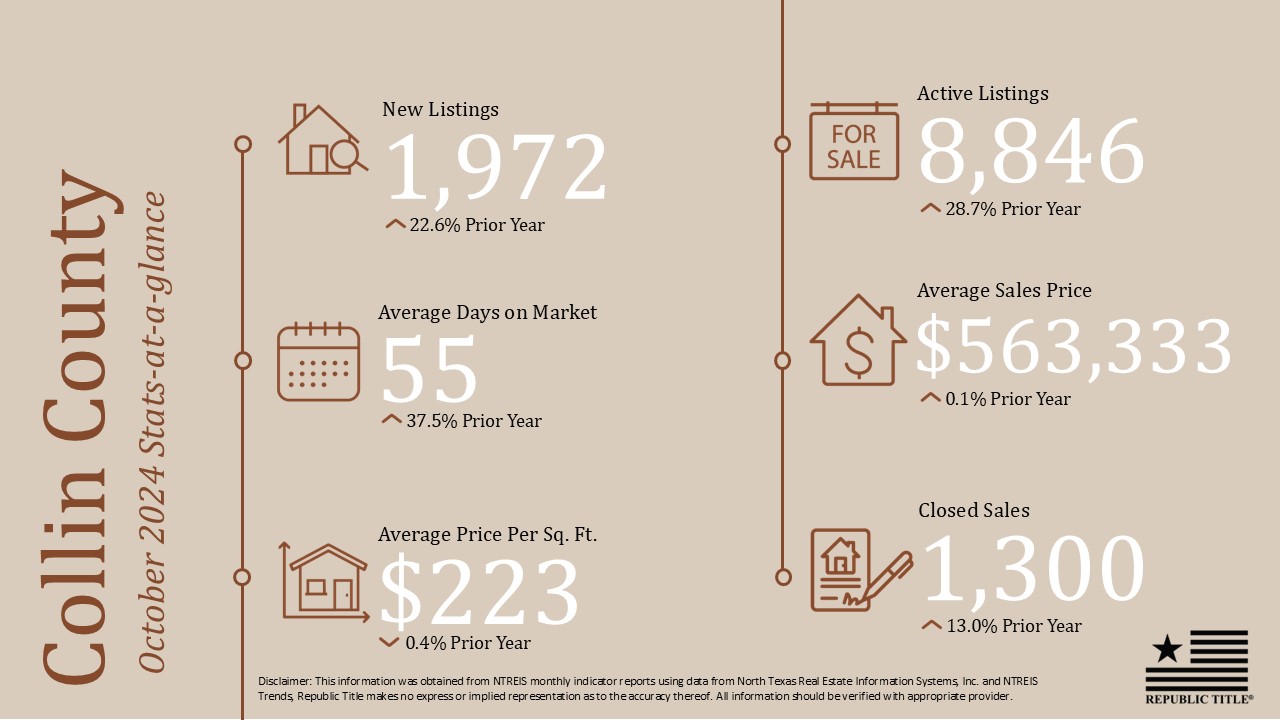February brought continued strength to the North Texas real estate market, with rising inventory, steady sales activity, and moderate price growth signaling a strong start to the year. Buyers are gaining more options while sellers continue to benefit from solid property values and increased demand. As we watch 2025 unfold, the numbers suggest that North Texas remains a vibrant, opportunity-filled market.
Key Market Trends by County
- Collin County
Inventory growth continues to lead the region with 7,907 active listings, a 42.1% increase from last year. New listings also rose to 1,860, up 7.6%, providing fresh opportunities for buyers. Closed sales declined 6.4% to 1,085. The average sales price rose modestly to $551,465, up 1.7, while the average days on market increased to 66, suggesting that while homes are still selling, buyers may be taking a little more time to make decisions. - Dallas County
Dallas County continues to reflect strong market activity. Active listings reached 11,860, a 33.5% increase, while new listings edged up 4% to 2,717, keeping inventory levels refreshed. Closed sales were down 6.5%, totaling 1,402, and the average sales price rose 6.8% to $534,530—a notable jump that underscores buyer confidence. Homes are staying on the market longer, with average days on market up to 57, a 23.9% increase. - Denton County
Denton is holding strong with 6,425 active listings, a 32.9% jump from last year. New listings hit 1,739 (up 10%) while closed sales dropped by 7.9%, reaching 952. Although the average sales price held nearly flat at $528,781 (down just 0.1%), the consistent activity and modest pricing make Denton a balanced and competitive market. Homes are selling a bit more slowly, with days on market up 14.5% to 63 days. - Rockwall County
Rockwall continues to shine, especially for a smaller market. New listings surged 29.7% to 306. Similar to other North Texas counties, closed sales had a 28.6% decrease, totaling 140. The average sales price climbed a robust 12.7% to $559,539, reflecting increased demand and value in this growing community. Active listings also rose 10.1% to 1,142, while homes are spending an average of 91 days on the market, up just slightly from last year. - Tarrant County
In Tarrant County, active listings grew to 9,855, up 19.3%, and new listings dropped 8.1% to 2,423. Closed sales were also down, decreasing 8.4% to 1,468. The average sales price rose slightly to $416,808 (up 0.3%), showing price stability in a popular and competitive county. The average days on market increased by 17%, landing at 62 days—indicating more thoughtful purchasing behavior from buyers.
With inventory rising and home prices showing modest but steady gains, North Texas enters the spring season with a balanced outlook. Buyers have more to choose from, sellers are still benefiting from strong values, and the pace of sales is giving everyone a little more breathing room.
At Republic Title, we’re committed to helping you navigate whatever the market brings. Whether you’re buying, selling, or investing in 2025, trust our team of experts to deliver smooth, secure transactions backed by unmatched local insight.
Our stats infographics include a year over year comparison and area highlights for single family homes broken down by county. We encourage you to share these infographics and video with your sphere.
For more stats information, pdfs and graphics of our stats including detailed information by county, visit the Resources section on our website at DFW Area Real Estate Statistics | Republic Title of Texas.
For the full report from the Texas A&M Real Estate Research Center and for NTREIS Local Market reports click here.







































































































